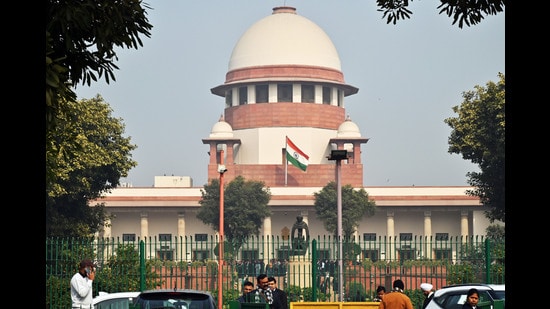SC joins battle to protect children
An expansive judgment on child pornography plugs legal loopholes, offers a curative framework to deal with the crime
The battle against sexual exploitation of children received a boost on Monday with the Supreme Court judgment that held that viewing in private, storing and possessing sexually explicit material involving minors, all constitute a crime under the Protection of Children from Sexual Offences (POCSO) Act and the Information Technology Act. The apex court’s order, which overruled a Madras high court judgment that held mere possession or storage of “child pornography” was not an offence under the law, also took an expansive view of the issue and offered a curative framework to deal with it.

There are multiple takeaways from the judgment authored by Justice JB Pardiwala. One, the Court has said that the term “child pornography” is a misnomer and suggested that it be replaced by “child sexual exploitative and abuse material” or CSEAM. This change should remove any ambiguity about the heinous nature of the crime and frame it as an act of violence against children — pornography involving adults at times may be consensual, which does not constitute a crime unlike in the case of minors. In the Court’s words, “Child sexual exploitation is one of the most heinous crimes imaginable, and the offence of child pornography is equally as heinous if not more, as in the latter the victimisation and exploitation of the child do not end with the initial act of abuse. It, in essence, turns the singular incident of abuse into a ripple of trauma-inducing acts where the rights and dignity of the child is continuously violated each time such material is viewed or shared”. Two, the Court has spoken about “constructive possession” to bring the act of viewing child pornography without having physical possession of it (for instance, watching on streaming platforms on devices) under the ambit of law. The Court has held that parts of POCSO and IT Acts be interpreted accordingly to plug loopholes so that offenders do not take advantage of technology to circumvent legal barriers erected against the trading and consumption of CSEAM. Three, the Court recognises that weaponising the law alone is insufficient to deal with CSEAM crimes: The order speaks about the need for better societal understanding of the sexual exploitation of children, prescribes “positive sex education” for better awareness about these crimes, and calls for a compassionate approach towards the victims of violence.
The onus is now on the legislature and executive to implement the Court’s vision. A larger conversation in society and administrative action — from appointing an expert panel to devise health and sex education programmes to raising awareness about POCSO — should help raise the bar against CSEAM crimes.





